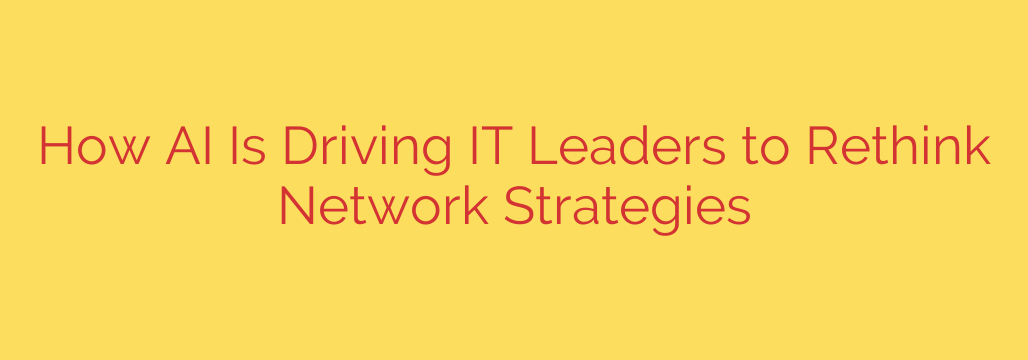
The rise of artificial intelligence is fundamentally changing how organizations operate, placing immense pressure on underlying IT infrastructure. For IT leaders, this necessitates a critical re-evaluation of traditional network strategy. The demands placed on networks by AI workloads – requiring massive data transfer, low latency, and high bandwidth – are unprecedented.
Simply scaling up existing infrastructure is often insufficient and unsustainable. Instead, IT departments are finding they must adopt more intelligent, automated, and dynamic approaches to network management. This shift involves leveraging AI itself within the network, a concept often referred to as AIOps. By applying machine learning and AI to network data, organizations can gain deeper insights, predict potential issues before they impact users, and automate complex tasks like configuration, monitoring, and optimization.
The ability to automate is paramount. Network automation, powered by AI, allows IT teams to respond instantly to changing conditions, optimize traffic flow in real-time, and provision resources dynamically to meet the fluctuating demands of AI models and other data-intensive applications. This not only improves performance and reliability but also frees up valuable IT staff from repetitive manual tasks, allowing them to focus on strategic initiatives.
Security is another major consideration. The expanded attack surface created by AI deployment and the sensitive nature of the data involved require robust, intelligent security measures. Networks must be capable of identifying and mitigating threats automatically, potentially leveraging AI-driven security analytics and implementing concepts like zero trust architectures that verify every connection attempt.
Furthermore, the interconnectedness of modern IT environments, including widespread cloud computing and edge deployments, means network strategy must encompass a hybrid or multi-cloud reality. Ensuring seamless, secure, and high-performance connectivity across diverse environments is crucial for supporting distributed AI training and inference.
Ultimately, adapting to the AI era means transforming the network from a static, reactive entity into an agile, proactive, and intelligent platform. IT leaders are tasked with building networks that are not just pipes for data but active participants in the computational process, capable of self-optimization, self-healing, and intelligent security enforcement. This strategic pivot is essential for unlocking the full potential of AI and driving future business success.
Source: https://www.helpnetsecurity.com/2025/06/11/ai-networks-modernization/








